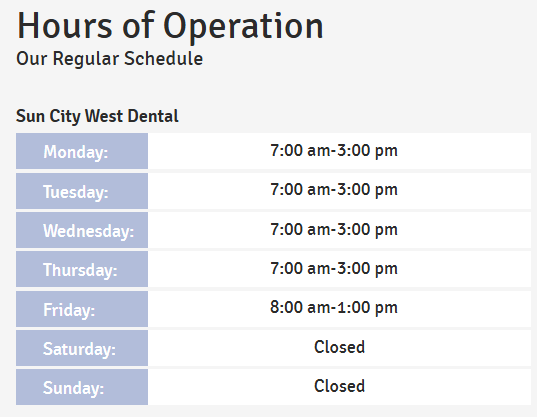Can Urgent Care Prescribe Anti-Anxiety Medication?
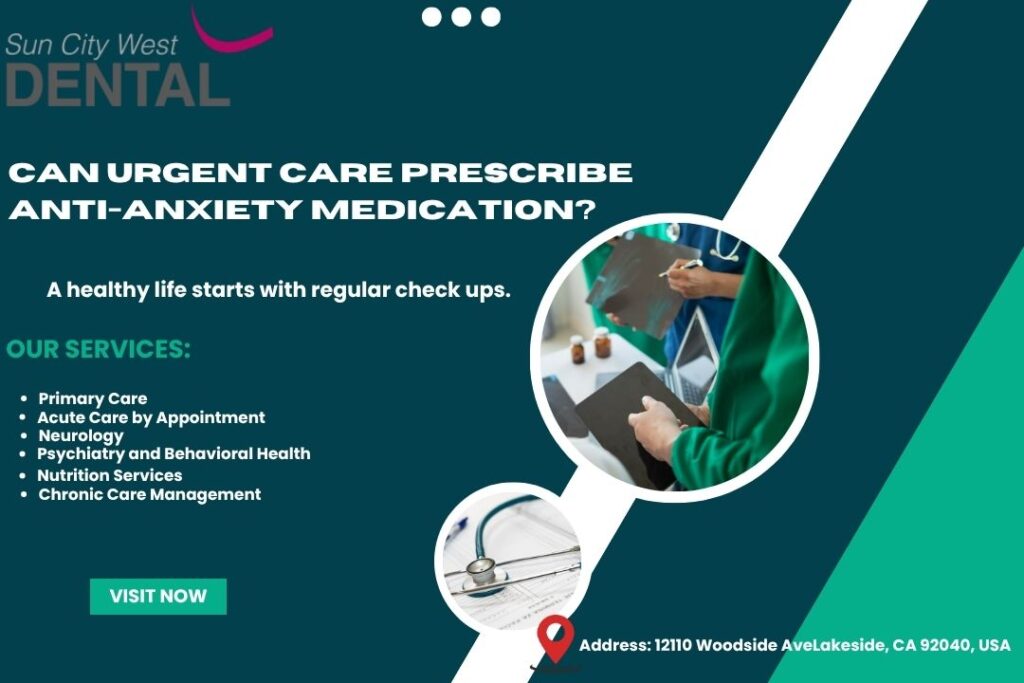
Yes, anxiety medications can be prescribed in urgent care, but this is limited to those who can keep you going until you can see a psychiatrist. While emergency rooms are equipped to handle serious or life-threatening crises, urgent care clinics also address non-emergency conditions that require immediate attention. For people whose anxiety suddenly increases or is excessive and difficult to control, urgent care may be the place to go for quick help. Doctors who provide emergency care can offer short-term treatment for certain conditions, including anxiety. Instead of saying “urgent care doctors,” it’s better to describe them as providers who give immediate but temporary help. They may prescribe short-term anxiety medication to stabilize someone, but not for long-term use. These medicines are meant to help a patient get through the acute phase only. After that, standard medical guidance is for patients to follow up with their primary care doctor or a mental health professional for a full evaluation and long-term treatment plan. This phased approach provides immediate relief as needed, while also treating the underlying causes of anxiety through appropriate ongoing care. What mental health services do urgent care centers provide? Urgent care centers are not full-service mental health clinics, but they can provide meaningful support when you or a loved one is struggling. Their role is to evaluate patients, provide short-term support, and direct them to the right long-term resources. Here’s what you’ll typically see: Initial Assessment Healthcare providers may begin with a brief mental health assessment, checking symptoms and triggers, medical history, and the severity of the anxiety or distress. This is how they decide whether urgent care is the appropriate level of care or whether a higher level is needed. Short-Term Medication Support If your symptoms are severe, such as extreme anxiety or sudden panic attacks, an emergency care provider may prescribe medications on a short-term basis to help stabilize you. These prescriptions are for temporary symptom relief, not long-term treatment. Referrals to Specialists Once they address your immediate problem, an emergency care provider can also connect you with necessary mental health services, whether it’s a therapist, psychologist, or psychiatrist, or one of our focused treatment programs. Therefore, these referrals ensure you receive ongoing support after that initial meeting. Crisis Guidance and Stabilization Emergency rooms (staff) can provide some crisis intervention to people in acute crises. However, if the situation is serious or safety may be an issue, they will direct you to the emergency room or another level of emergency management, as appropriate. Which anti-anxiety medications does emergency care offer? Urgent care centers typically focus on short-term care and are ultimately unresponsive to long-term mental health care. Therefore, the medications they provide are designed to suppress acute, immediate symptoms. Common options include: Benzodiazepines According to CDC guidelines, if a person is in severe distress or experiencing an anxiety attack, sedative medications may be necessary, and doctors may prescribe medications such as lorazepam (Ativan) or alprazolam (Xanax). These medications are fast-acting, but they are used cautiously due to the risk of addiction and sedation. Options Other Than Benzodiazepines Some physicians prefer alternatives like hydroxyzine, an antihistamine with anti-anxiety effects. It reduces symptoms without the potential for addiction like benzodiazepines, so that it may be a safer option for some patients in the short term. Beta-Blockers For individuals whose anxiety triggers physical symptoms (such as tremors, rapid heartbeat, or sweating), doctors may prescribe propranolol—or a similar medication—for example, under brand names like Inderal. These medications do not address the emotional aspect of anxiety, but can help control the body’s response. In any case, these medications are only for temporary symptom relief. They are not a substitute for long-term care, treatment, or regular visits with a mental health professional. At what point will emergency care prescribe anti-anxiety medications? Emergency care providers only prescribe medications for anxiety in limited cases, focusing on short-term safety. They usually consider medication when: Immediate relief of symptoms is necessary. If your anxiety is causing you intense distress—such as chest tightness, tremors, or intense panic attacks—urgent care can prescribe a fast-acting medication to help you feel balanced. Your regular doctor is not available. When you cannot contact your primary care doctor or mental health professional, emergency care can help provide access and temporary relief until more appropriate follow-up is available. You are experiencing a short-term crisis. “There may be a situational crisis in which prescribing a certain number of pills may be appropriate,” until they have considered other forms of support for the source of that stress, such as therapy for grief, trauma, or other acute sources of stress. Follow-up care confirmed Urgent care providers will usually prescribe medication for anxiety if they know you can seek follow-up care elsewhere. They may inquire about future appointments or even help you schedule one before writing the prescription. This ensures that acute symptoms are addressed, while long-term treatment is referred to relevant psychological treatment providers. Advice for patients looking for anxiety medications If you are considering going to urgent care for anxiety relief, a little preparation can make your experience better and more effective. Consider the following: Be honest about your symptoms. Tell me as accurately as possible about your stress experience—how often it occurs, its intensity, and what interventions have or have not helped you in the past. This way, the provider can make the safest and most appropriate decisions for each patient. Understand what emergency care can and cannot do. Emergency care can help temporarily stabilize, but it is not a cure for chronic anxiety. Think of it as a temporary option for support until you find proper, permanent care. Schedule a follow-up with a specialist. Whether you see a psychiatrist, therapist, or primary care physician, be sure to arrange for follow-up care after your appointment. Don’t forget that you will need long-term support to reduce triggers, adjust medication if needed, and improve healthy coping strategies. Consider Therapy for Lasting Relief Medications can help reduce symptoms, but therapy often provides intensive measures for long-term
Is It Dangerous to Buy Xanax Online?
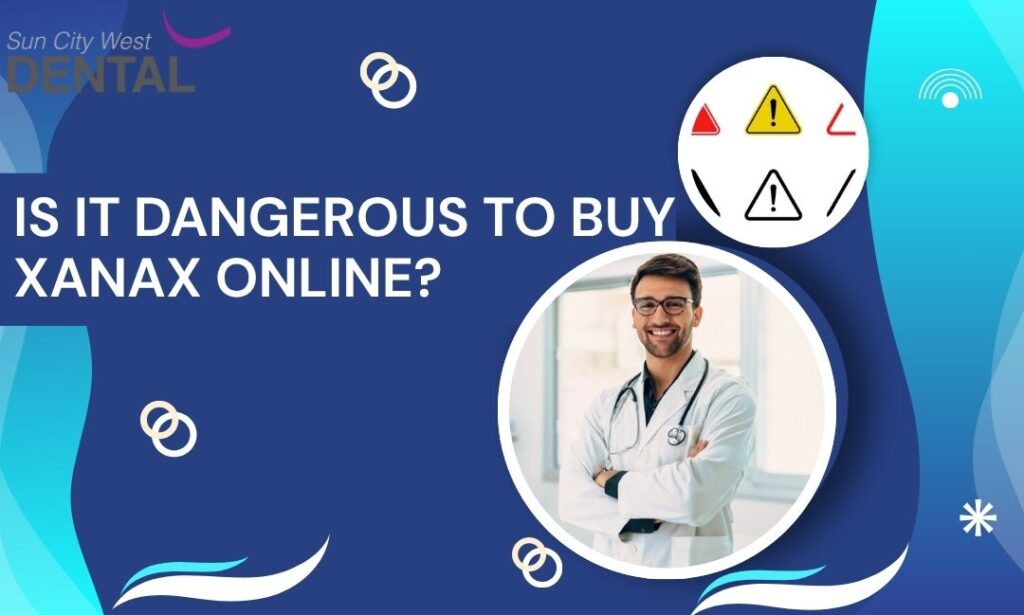
Nowadays, anxiety is on the rise, with millions of people overwhelmed, looking for fast relief. For some, the instinct is to try therapy, change their lifestyle, or seek out medication from a doctor. More and more often, that amounts to buying drugs online without a healthcare professional’s review or approval. Medications became more widely available with the explosion of online pharmacies, but illegal and counterfeit drug sales have also spiked. Xanax (alprazolam), one of the most abused drugs in this class, is well-known for its anxiety-relief powers and its ability to create dependence. In 2025, US health officials expressed concern over a dramatic increase in the distribution and sale of fraudulent Xanax pills nationwide that contained poisonous substances. Many of these counterfeit tablets have been laced with fentanyl or other synthetic benzodiazepines, and are very dangerous and in some cases deadly. These developments follow news that the DEA and FBI cracked down on a string of dark market operations manufacturing millions of fake Xanax, underscoring the growing risks for anyone buying such pills over the internet. Despite its popularity in the US and stringent prescription rules, many Americans still skip a trip to their doctors by getting Xanax online or on the streets. While it might not seem like much or an easier way to get high, “It’s hazardous and you do not know what could happen.” This allows users of CBD e-liquid to be vulnerable to potential health dangers, legal issues, and, at worst, fatal overdose. Specialists and medical organizations advise consumers to only purchase Xanax from state-licensed physicians, pharmacies, or have a pharmacist determine it instead of the rule. What Exactly Is Xanax (Alprazolam)? Xanax is the brand name for alprazolam, a prescription medication belonging to the benzodiazepine class of drugs. Benzodiazepines are central nervous system depressants that help calm brain activity, often prescribed for conditions such as anxiety disorders, panic attacks, seizures, and sometimes insomnia. Although “Xanax” is the most recognized name, alprazolam is also marketed under brands like Niravam. It is classified as a Schedule IV controlled substance, meaning it has accepted medical uses but also carries a significant risk of dependence and misuse. Because of this, alprazolam is legally available only through a licensed medical provider’s prescription. Pharmaceutical-grade Xanax typically comes in small tablets, often white, oval-shaped pills with the brand or dosage clearly imprinted on the surface. Other common forms include “Xanax bars,” which may appear yellow, green, or blue, depending on the dosage. Any pill purchased outside of a legitimate pharmacy that lacks these markings—or looks different from verified versions—should be treated as unsafe and potentially counterfeit. How Xanax Works in the Body? Anxiety and panic disorders are linked to an overactive brain. Xanax works by enhancing the effects of gamma-aminobutyric acid (GABA), a neurotransmitter responsible for slowing down brain activity. By boosting GABA’s calming effect, Xanax can quickly ease racing thoughts, panic sensations, and physical tension. Unlike many psychiatric medications that require weeks to take effect, Xanax is fast-acting. Most people begin to notice its sedative and relaxing properties within 15 to 45 minutes of swallowing a dose, and the drug’s peak concentration in the bloodstream usually occurs within two hours. Depending on metabolism and dosage, its effects can last several hours, which is why it is often prescribed for sudden spikes of anxiety, such as phobias or panic attacks. Still, the very qualities that make Xanax so effective also make it risky. Because it provides rapid relief, people can develop a psychological reliance on the drug. Over time, tolerance builds, requiring higher doses to feel the same effect. This cycle easily progresses into dependence and, eventually, addiction. Why Do People Seek Out Xanax Without a Prescription? Xanax is designed to relieve acute anxiety by quickly calming the nervous system, which is why so many people find it appealing. Unfortunately, this fast-acting relief makes it tempting for people to misuse. Instead of consulting a doctor, some people borrow it from friends or family members, purchase it from street dealers, or order it online from unregulated websites. The appeal of buying Xanax online is obvious: convenience, anonymity, and bypassing medical appointments. But what many people don’t realize is that these “pharmacies” often operate illegally and without regulation. Pills advertised as Xanax may actually contain dangerous substances such as fentanyl, which has caused a surge in fatal overdoses across the United States. Is It Dangerous to Buy Xanax Online? While there are legitimate telehealth services and licensed online pharmacies that require prescriptions, a large number of websites advertising Xanax are illicit operations. These vendors often sell counterfeit pills that look like Xanax but are laced with other harmful drugs, sometimes at lethal doses. One widely known counterfeit brand is Farmapram, sometimes referred to as “Mexican Xanax.” Though marketed as the same medication, Farmapram purchased online is frequently unregulated, poorly manufactured, and potentially life-threatening. Beyond health risks, purchasing Xanax without a prescription is a serious legal violation. In the U.S., it is a federal crime to buy or possess controlled substances without authorization. Penalties may include fines, imprisonment, or both. Why Buying Xanax in Mexico Is Dangerous? In Mexico, Xanax and its generic equivalent, alprazolam, are more widely available and often sold at a fraction of the U.S. cost. Many tourists and individuals struggling with anxiety or addiction see this as an opportunity to stock up without needing a doctor’s prescription. But buying Xanax in Mexico, or from any unregulated source, comes with severe health and legal risks. Unlike the U.S., where the Food and Drug Administration (FDA) tightly regulates pharmaceutical production and distribution, many Mexican pharmacies—particularly those catering to tourists—do not adhere to the same safety standards. This increases the likelihood that the pills you purchase are counterfeit, contaminated, or mislabeled. Recent reports from the U.S. Drug Enforcement Administration (DEA) and medical researchers have confirmed that many counterfeit Xanax pills purchased in Mexico are laced with fentanyl, a synthetic opioid up to 50 times stronger than heroin. A single pill containing fentanyl can
What is the Average Cost of Dental Implants?

Dental implants, the gold standard due to their high success rate and longevity, are a trusted way of replacing missing teeth. They enhance your smile, healthy bone density, and mouth’s ability to chew and speak. Rest assured, dental implants are a safe and successful option. Knowing the cost and how much you might have to pay is essential if you are considering dental implants. What Are Dental Implants? Dental implants are usually safe and successful but are not for everyone. Rest assured, talking with your dentist about possible risks or complications is vital before having it done. A dental implant is a titanium post, no larger than the missing tooth’s root. It is surgically inserted into your jawbone and capped with a crown similar to a natural tooth in appearance and function. Dental implants can fill in one tooth or several teeth or even hold complete dentures. Average Cost of a Dental Implant Average Cost of a Dental Implant Cost Breakdown: Full Mouth Dental Implants For full-mouth restoration patients, procedures such as All-on-4 implants can be performed. All-on-4 implants are a cost-effective solution that utilizes four implants to stabilize a full arch of teeth. Depending on materials and case complexity, these can vary from $15,000 to $30,000 per arch. What Influences the Price? Are Dental Implants Worth the Cost? Yes, dental implants are worth the cost. Although the initial investment will be greater than other tooth replacement methods, their longevity makes them a wise long-term investment. With good care, implants can last 20 years or more, providing a natural appearance and feel that dentures and bridges frequently can’t offer. This long-term benefit should give you confidence in your decision. Can Insurance cover Dental Implants? Part of some dental insurance plans cover implants, particularly the crown section. Yet, coverage can range widely. You should ask your carrier or have your dental office assist you in understanding your benefits. Final Thoughts Dental implants provide a permanent and predictable answer to missing teeth. While the upfront expense may seem prohibitive, their long-term advantages are generally worth the initial cost. Ask your dentist about your choices, request a comprehensive treatment plan, and check into available payment or financing alternatives if necessary. This will enable you to make an educated choice regarding your oral health. Best Scleral Contact Lens Expert in Dubai – Specialist Vision Care by Dr Rahul Raghav Regarding scleral contact lenses in Dubai, we at Dr Rahul Raghav and his staff provide a consultation service beyond the mere fitting of lenses. We specialize in high-end scleral lenses for keratoconus sufferers, irregular cornea, extreme dry eye, and post-surgical issues. Our thorough eye tests and customized fittings provide maximum comfort, clear vision, and eye health, offering a solution where standard lenses are lacking. With our extensive experience and the best access to cutting-edge lens technology, we provide a truly special service. Enjoy empathetic, skilled care and recover clear, comfortable vision with individually designed scleral lenses for your eyes.
Missing Teeth Holding You Back? 8 Clear Signs You Might Need Dental Implants

1. Persistent Toothache If you’re experiencing unbearable toothaches, something is definitely wrong. This could stem from an infection, severe decay, nerve issues, or even problems with a previous filling. Problems like these will not go away on their own. Forgetting about it can worsen the problem, leading to abscesses, periodontal diseases, or even loss of bone structure and density. If a root canal hasn’t treated the issue, Dental Implants may suit you best in the long-term—they would remove and replace the impaired tooth to restore functionality. 2. Teeth Shifting Out of Place Misplaced or loose teeth? This is usually a problem of gum disease or jaw bone resorption. Weak jaw bone can cause problems in displacement or drifting of healthy teeth. Shifting of teeth can be caused by failure of other dental components. Implants help as they are attached to the jaw bone. This jaw support prevents the movement of healthy teeth and thus stops the shifting of teeth. 3. Missing Teeth Now gaps are noticed, missing teeth not only cause gaps causing imbalance in the entire bite but also hampers the ideal use of the mouth. When the jaw bones begin to shrink due to lack of proper use, the surrounding teeth begin to shift into the empty spaces. Strategically placed implants act like natural roots thereby strengthening the bone and providing support to the face. 4. Receding Gums The gum area between the tooth and the root is covered which reduces the size of the fully exposed root which worsens decay as well as tooth sensitivity. Once accompanied by weakened gums, these reduced bone closures around the teeth will help support the lack of tooth structure. Helping to strengthen the mouth allows those suffering from advanced gum disease to heal and where the focus is on hiding decaying teeth, hiding these bones invites some awkward looks on the upper side by permanently integrating them into the facial vision. 5. Difficulty chewing or eating If chewing or eating a particular food causes any discomfort, you need to be concerned. Whether it is due to missing or damaged teeth, eating should not be a problem. A person’s favorite foods such as nuts, fruits, meat, and even spicy foods can cause pain or strain. Whatever your situation, dental implants can restore full chewing ability. 6. Gum infections and bad breath Bad breath and recurring gum infections can lead to gum disease, which can lead to tooth decay if left untreated. Without proper oral hygiene, other problems such as tooth loss or complicated health risks can arise. Decayed teeth can be replaced with implants, which not only improve hygiene in a better way than before but can also help clean bacteria inside the mouth and stabilize a person’s smile. 7. Ill-fitting or loose dentures It is a common problem for dentures to slip when a person talks or chews food. If this sounds like you, know that you are not alone. Because the jawbone shrinks with age, dentures gradually lose their proper fit. Implant-supported dentures allow a person to eat, smile, and speak naturally without gum. Safety is not an issue here. 8. Facial changes The shape of a person’s face may change due to the absence of teeth. In the absence of stimulation through the roots of the teeth, resorption of the jawbone occurs, resulting in sunken cheeks, loose skin, and premature aging. On the other hand, dental implants fuse with your jawbone, minimizing bone loss and maintaining your face’s youthful contours. https://suncitywestdental.com/xanax-alprazolam/ Book a free consultation for dental implants today Book a Free Consultation for Dental Implants Today If you’re experiencing any of these signs, don’t wait. Dental implants can restore more than just your smile—they can boost your health, confidence, and overall quality of life. At Sun City West Dental, we provide compassionate, expert implant care tailored to your needs. Our trusted team is here to guide you every step of the way. 📍 13920 W Camino Del Sol #12, Sun City West, AZ 85375, United States 📞 Call Now: +1 623 – 584- 7060
Treatment and Recovery from Tramadol Overdose
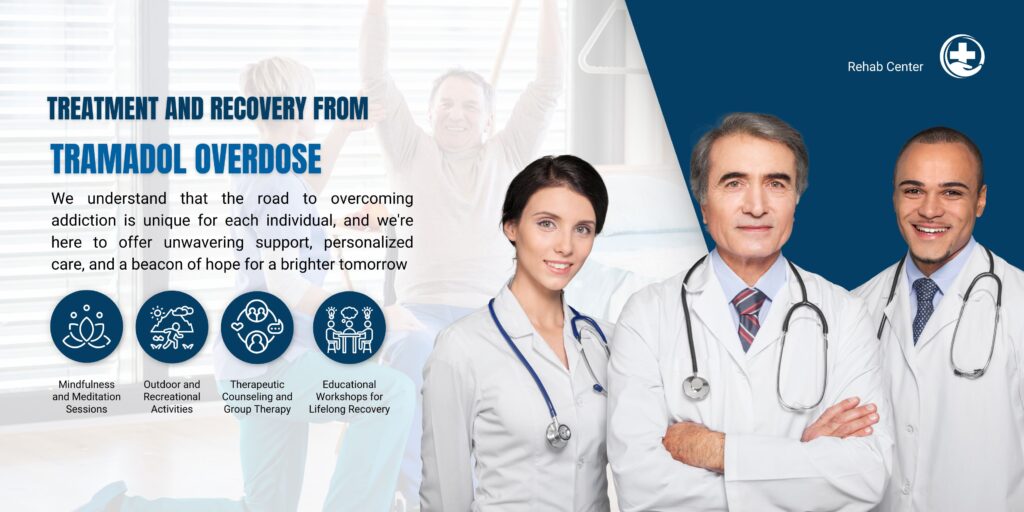
Tramadol is a pain reliever that works by changing the way the brain and nervous system respond to pain. It is in a class of medications called opioid analgesics and is used to treat moderate to severe pain, including chronic back and muscle problems. Tramadol is a central nervous sy e-threatening symptoms, but early treatment and long-term recovery support can help individuals rebuild their lives safely and healthily. What is Tramadol, and Its Potential for Overdose? Tramadol is a synthetic opioid used primarily to manage moderate to severe pain. It works by altering the way the brain perceives pain signals, making it effective for various conditions. However, this effectiveness comes with risks. Many individuals underestimate tramadol’s potential for addiction and overdose. While it may seem less potent than traditional opioids, its impact on the central nervous system can still be profound. Misuse—whether through higher doses or combining it with other substances—can lead to dangerous consequences. Tolerance can develop quickly, prompting users to increase their dosage in search of relief or euphoria. This behavior significantly raises the risk of an overdose, which can result in respiratory failure and even death if not addressed promptly. Understanding these dynamics is essential for anyone using tramadol or caring for someone who does. Awareness fosters caution and encourages safer practices around medication use. Signs and Symptoms of Tramadol Overdose Recognizing the signs of a tramadol overdose is critical for timely intervention. Common symptoms include: >>> If you suspect someone is experiencing an overdose, seek emergency help immediately by calling 911. Quick action can save lives. Immediate Steps to Take in Case of Tramadol Overdose If you suspect someone has overdosed on Tramadol, act quickly. Time is crucial in such situations. First, assess the person’s condition. Check for responsiveness and breathing. If they are unresponsive or having difficulty breathing, call emergency services immediately. While waiting for help, try to keep the person awake and alert if possible. Gently shake their shoulders and speak loudly to them. Do not leave them alone; stay by their side until medical personnel arrives. Avoid giving them anything to eat or drink as this could complicate matters further. If you know how much Tramadol they took, be prepared to share that information with the medical team when they arrive. The situation can be distressing, but staying calm will help both you and the affected individual during this critical time. Medical Treatment for Tramadol Overdose Treatment for tramadol overdose typically begins with emergency care. Key interventions include: Rehabilitation Programs for Tramadol Dependency If an overdose is linked to addiction, rehabilitation programs play a crucial role in recovery. Options include: Support Groups and Counseling for Recovery Emotional healing is essential for long-term recovery. Support options include: Prevention Strategies for Avoiding Tramadol Overdose Preventing a tramadol overdose starts with awareness. Educating yourself about the medication’s effects is crucial. Understanding how it interacts with other substances can save lives. Always follow your doctor’s prescription strictly. Do not adjust dosages without consulting a healthcare professional. This ensures that you stay within safe limits. Keeping medications out of reach is also important, especially if there are children or pets in the home. Secure storage minimizes accidental ingestion. Communication plays a key role too. Talk openly with family members about your usage and any concerns related to tramadol. Support systems help monitor and manage usage effectively. Consider regular check-ups with your doctor to evaluate ongoing needs for tramadol treatment. These appointments can help identify potential issues early on and make adjustments as needed to avoid risks associated with overdose. Living a Healthy Life Post-Recovery Recovery from a tramadol overdose is an opportunity for transformation. Tips for long-term success include: Life after an overdose can be fulfilling with the right mindset and support system. Conclusion Recovering from a tramadol overdose is challenging but achievable with timely medical intervention, comprehensive rehab programs, emotional support, and relapse prevention strategies. With determination and access to resources, individuals can lead healthy, fulfilling lives post-recovery. Frequently Asked Questions (FAQs) Can someone fully recover after a Tramadol overdose? Yes, with proper medical treatment, rehabilitation, and ongoing support, individuals can recover fully from both physical and emotional effects of an overdose. Is one overdose enough to need rehab? While not everyone may require rehab after one overdose, it’s highly recommended if addiction or dependency is a factor. How long is recovery after a Tramadol overdose? Recovery timelines vary depending on the severity of the overdose and individual circumstances but often include weeks of medical care followed by months of therapy. Can overdose damage be permanent? In severe cases, complications such as brain damage from oxygen deprivation may occur, but early intervention reduces this risk. Is it possible to use pain medication safely after recovery? Yes, under close medical supervision and with non-opioid alternatives when possible. Related Articles:
How to Get a Xanax Prescription Online
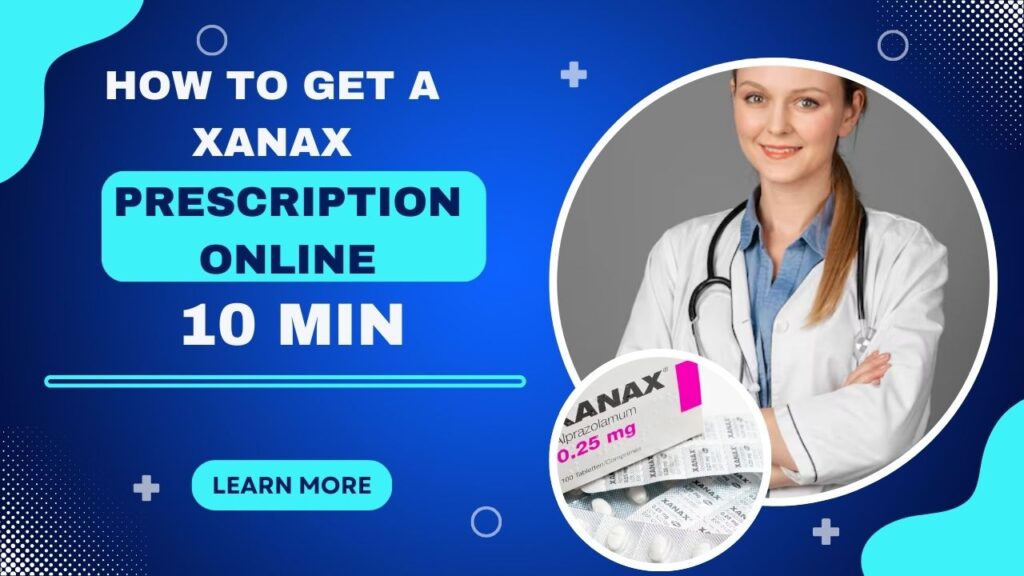
Alprazolam – marketed as Xanax – is one of the more commonly prescribed medications meant to treat ailments such as anxiety and panic disorders. It belongs to the more popular classes of medicine called benzodiazepine, which works by improving the impact of a calming neurotransmitter known as GABA. Due to its addictive nature, many individuals seek convenient ways to obtain a Xanax prescription, including online options. Navigating the legal and medical aspects of obtaining an online prescription for Xanax can be challenging. This guide simplifies the process, outlining the legal requirements, safety considerations, and responsible usage to help you secure a prescription legally and confidently. What are Uses and features of Xanax? Xanax is a fast acting type of benzodiazepine used for the treatment of anxiety disorder, panic attacks, and in some cases, even sleeplessness. Because of the likelihood of dependence and misuse, it is considered a restricted substance. As is the case with many medications, medical practitioners tend to prescribe doses of Xanax for symptom relief associated with anxiety for a short period of time, all while encouraging further aids such as therapy or other medications. Alongside its efficacy, if abused, it may cause a myriad of issues such as addiction, overdose, and withdrawal symptoms. Some of the most popular medical uses are: Who Is Eligible for a Xanax Prescription? Not everyone qualifies for a Xanax prescription. Doctors evaluate a patient’s medical history, symptoms, and risk factors before prescribing it. Eligibility typically includes: People with a past history of substance abuse, respiratory diseases, or some particular mental disorders may not be eligible. Make sure to always tell a healthcare provider the complete medical background to evaluate the suitability. Can I Legally Get a Xanax Prescription Online? Yes, however this is only possible with the help of a licensed healthcare provider. As a Schedule IV controlled substance, Xanax is regulated by the U.S. Drug Enforcement Administration (DEA) which makes it necessary for prescriptions to be controlled very rigidly. In order to get a Xanax prescription online legally: Verify the credentials of the online pharmacy – Check if the pharmacy offering Xanax is accredited with the National Association of Boards of Pharmacy (NABP). Offering Xanax without a prescription from an unauthorized source is illegal and unsafe. These pharmacists are operating against the law. Buying medicine from these sites can result in one being harmed by substandard products, or worse, fake medications. How to Talk to Your Doctor About Getting a Xanax Prescription? When discussing anxiety treatment with a doctor, honesty and clarity are key. Follow these steps: Doctors may prescribe Xanax if they determine it is the best course of treatment. However, they might also suggest alternative approaches depending on individual needs and health risks. The Process of Getting a Xanax Prescription Online In most cases, obtaining a prescription over the phone follows this workflow: Choose a Reputable Telemedicine Site Complete an Online Consultation Receive a Prescription Prescription Shipping or In-person Pick Up What Information Do I Need to Provide to Obtain a Xanax Prescription Online? Make sure you have these documents ready to avoid delay for smooth consultation: Providing accurate information helps doctors make informed decisions and prevents prescription denial due to incomplete or misleading details. Are There Any Risks Associated with Obtaining Xanax Online? While telehealth services provide convenience, there are risks involved, including: To minimize risks, always use reputable telehealth services and follow medical guidance strictly. Conclusion It is possible to get a prescription for Xanax online, but it should always be done in a legal manner and with responsibility. Make sure to check in with a medical professional, give the right health details, and only use verified pharmacies. Although Xanax works effectively for anxiety, its risks including dependence and side effects should not be ignored. There should be consideration of every treatment option, and medication should always be taken with supervision of a medical professional. For accurate diagnosis and treatment directions, consult a qualified healthcare expert. Following provided instructions optimally will ensure safe and effective use in the treatment of anxiety disorders.
Danger of Mixing Gabapentin (Neurontin) and Tramadol ( Ultram)
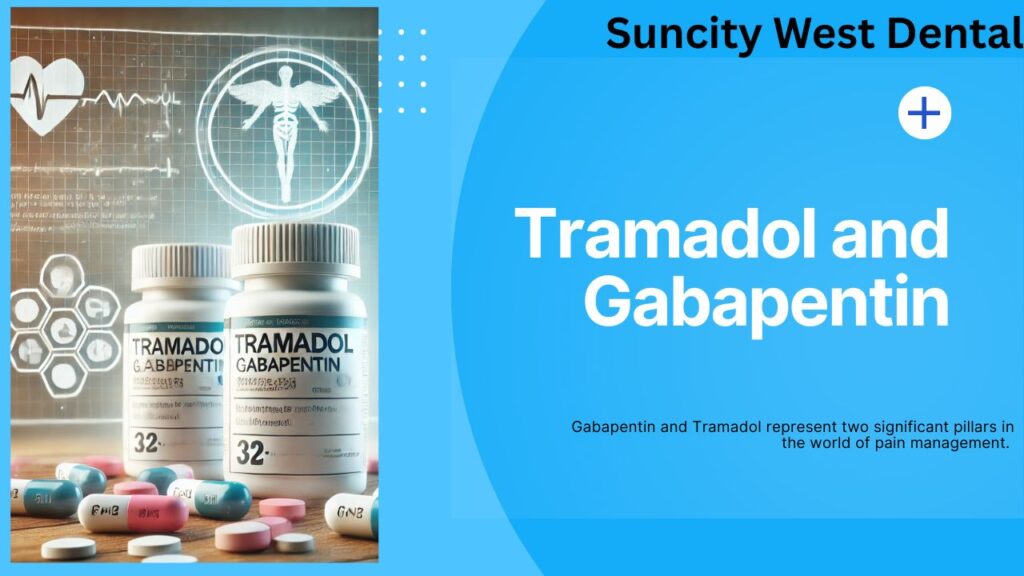
In recent years, doctors have been prescribing Gabapentin and Tramadol much more often for many different health problems. Both Gabapentin and Tramadol are analgesics. Gabapentin is typically used to treat neuropathic pain and seizure disorders, whereas Tramadol is administered for the relief of moderate to severe pain. Alongside their benefits, using both medications simultaneously can prove quite dangerous. Excessive sedation, respiratory depression, and drug overdose are some harmful effects of this combination. Understanding these risk factors is vital for preventing health issues associated with the concurrent use of these drugs. What Is Tramadol? Tramadol is a type of medicine that is used to treat pain. It is a synthetic opioid or narcotic, which means that it works by interacting with opioid receptors located on the surface of nerve cells. These receptors serve as an interface for pain signals that travel from the body to the brain. Like all narcotics, Tramadol does not cure the disease; it only helps reduce the perception of pain by manipulating signals of soreness that affect the brain. Tramadol comes in capsules and tablets. The latter comes in extended and immediate release formulations. Unlike extended release versions, immediate release tramadol works faster but requires being taken several times a day. Extended release version is normally expected to be taken once a day given that it lasts for about 12 hours. The dosage on a specific individual may vary due to differences in age, weight, height, or even the severity of a condition. Because tramadol is an opioid medication, it poses high potential for abuse and addiction. It is for this reason that doctors would normally place patients on lower doses and then increase gradually as the patient’s response is monitored. At the beginning of tramadol treatment, patients can expect to deal with dizziness, nausea, sedation, and sleepiness as side effects. These adverse symptoms are manageable as the body gets used to the medication. Unfortunately, like many other opioids, tramadol has aided the opioid epidemic in the United States. Numerous people tend to misuse opioids due to their euphoric effects, and some go as far as mixing it with other substances to enhance the high. What is Gabapentin? Gabapentin is a medication originally designed to treat seizures, but it is also highly effective in managing neuropathic (nerve-related) pain. Gabapentin works differently from traditional pain relievers by interacting with certain calcium channels in the nervous system. This interaction helps reduce the release of neurotransmitters that can trigger pain and seizures. As a result, gabapentin stabilizes neural activity, providing relief from nerve pain. Gabapentin is used to treat a variety of conditions, including fibromyalgia, restless legs syndrome, and hot flashes, in addition to its role in seizure control. One of the benefits of gabapentin is that it has a relatively low potential for abuse and addiction, making it a safer option for many people compared to opioids. However, it’s essential to follow a healthcare provider’s instructions closely to ensure it is used correctly, as gabapentin can have side effects and may interact with other medications. Can You Take Gabapentin With Tramadol? Taking gabapentin and tramadol together requires careful consideration and should only be done with a doctor’s approval. While both medications are effective for pain relief in certain circumstances, combining them without proper medical guidance can be risky. Medical Guidance is Essential It is generally not recommended to combine tramadol and gabapentin unless a healthcare provider has specifically prescribed both medications. In some cases, doctors may prescribe both drugs to treat severe pain that cannot be controlled with other treatments. However, when both medications are used together, it should always be under strict medical supervision, as there are risks of serious side effects. Risks of Using Gabapentin and Tramadol Together The main risk of taking gabapentin and tramadol together is that both medications affect the central nervous system (CNS) by slowing nerve activity. This can lead to dangerous side effects, including: The Danger of Respiratory Depression One of the most serious risks of combining gabapentin and tramadol is respiratory depression, which occurs when breathing becomes slow, shallow, or ineffective. This can result in dangerously low oxygen levels in the body, which could lead to permanent brain damage or even death if not treated promptly. For this reason, it’s critical that these medications are used only under a doctor’s supervision and that the patient is closely monitored for any signs of respiratory distress. Differences Between Tramadol and Gabapentin While both tramadol and gabapentin can be used to treat pain, they work in different ways and are used for different types of pain: Feature Tramadol Gabapentin Drug Class Opioid analgesic (synthetic opioid) Anticonvulsant Primary Use Pain relief (moderate to severe pain) Nerve pain, seizures, restless leg syndrome Mechanism of Action Acts on opioid receptors and inhibits serotonin & norepinephrine reuptake Modulates calcium channels to reduce nerve excitability Prescription Required? Yes (Controlled substance in many countries) Yes (Not a controlled substance in most places) Addiction Potential Moderate to high risk of dependence and abuse Low risk of addiction, but misuse is possible Side Effects Drowsiness, nausea, constipation, dizziness, respiratory depression (high doses) Drowsiness, dizziness, fatigue, swelling in limbs, coordination issues Withdrawal Symptoms Severe (flu-like symptoms, anxiety, sweating, muscle pain) Milder (anxiety, insomnia, nausea)Lower, but can cause sedation and confusion Overdose Risk High (can cause respiratory depression and coma) Lower, but can cause sedation and confusion Legal Status (USA) Schedule IV controlled substance Prescription-only, not a controlled drug Common Brand Names Ultram, ConZip Neurontin, Gralise Best For Acute and chronic pain relief Neuropathic pain, seizures, postherpetic neuralgia Important Considerations When Using Tramadol and Gabapentin To use tramadol and gabapentin safely, it’s important to follow these guidelines: Signs of a Tramadol and Gabapentin Overdose Overdosing on tramadol and gabapentin is a serious medical emergency that requires immediate attention. Recognizing the symptoms of an overdose is crucial for a prompt and effective response. Symptoms of a tramadol and gabapentin overdose can range from mild to severe and may include: If you suspect an overdose,
Valium vs Xanax for Anxiety: Differences and Which to Choose
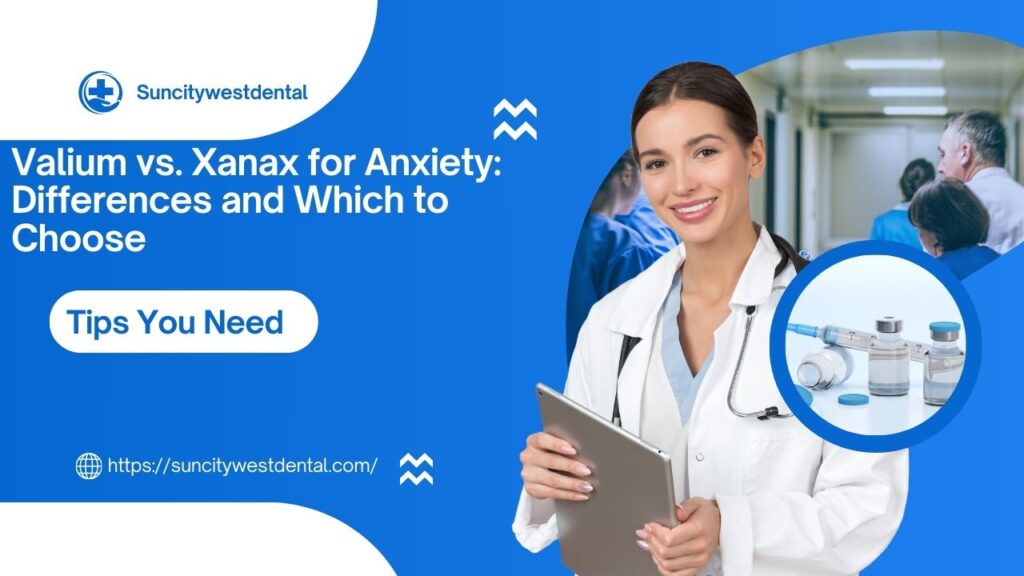
Anxiety disorders are among the most common mental health conditions, affecting approximately 40 million adults in the United States, according to the Anxiety and Depression Association of America (ADAA). Medications such as Valium (diazepam) and Xanax (alprazolam) are often prescribed to manage anxiety symptoms. Both belong to the benzodiazepine class of drugs, which work by enhancing the effects of gamma-aminobutyric acid (GABA), a neurotransmitter that slows brain activity and induces relaxation. While both Valium and Xanax are effective in treating anxiety, they differ in several key aspects, including their onset of action, duration, side effects, and risk of dependence. This article provides an in-depth comparison of Valium and Xanax, helping individuals and healthcare professionals understand which might be the better option for anxiety treatment. What Are Valium and Xanax? Valium and Xanax are both benzodiazepines, a class of medications commonly prescribed for anxiety, panic disorders, muscle spasms, and seizures. Despite their similarities, they have different pharmacological properties that impact their effectiveness and potential side effects. How Do They Work? Both Valium and Xanax work by increasing the activity of GABA, a neurotransmitter responsible for reducing excitability in the brain. This results in a calming effect, which can help relieve symptoms of anxiety, restlessness, and panic. Because of these differences, Xanax is better suited for immediate anxiety relief, whereas Valium may be preferred for long-term anxiety management or conditions requiring longer-lasting effects. Comparison: Valium vs. Xanax Feature Valium (Diazepam) Xanax (Alprazolam) Onset of Action 30 to 60 minutes 15 to 30 minutes Duration of Effect Up to 24 hours 4 to 6 hours Half-Life 20 to 70 hours 11 to 15 hours Common Uses Anxiety, muscle spasms, seizures Anxiety, panic disorders Risk of Dependence Moderate Higher due to rapid effects Withdrawal Severity Moderate High Controlled Substance Schedule Schedule IV Schedule IV Efficacy for Anxiety Treatment A study published in the Journal of Clinical Psychiatry found that benzodiazepines, including Valium and Xanax, are effective for short-term anxiety relief. However, long-term use of benzodiazepines can lead to tolerance, dependence, and withdrawal symptoms. Side Effects While both medications are effective, they come with potential side effects. Common Side Effects Serious Risks Factors Influencing the Choice Between Valium and Xanax Doctors consider several factors when prescribing either Valium or Xanax for anxiety treatment: 1. Nature of Anxiety Symptoms 2. Duration of Treatment 3. Risk of Dependence and Withdrawal 4. Individual Patient History Alternatives to Benzodiazepines Due to the risks associated with benzodiazepines, doctors may consider alternative anxiety treatments, including: Final Thoughts: Which is Better for Anxiety? Both Valium and Xanax are effective for treating anxiety, but the best choice depends on the individual’s needs: Ultimately, the decision should be made in consultation with a healthcare professional. While benzodiazepines can be helpful in managing anxiety, they should be used cautiously and for short-term relief when possible.
Ativan vs Xanax for Anxiety: Which One is Right for You?
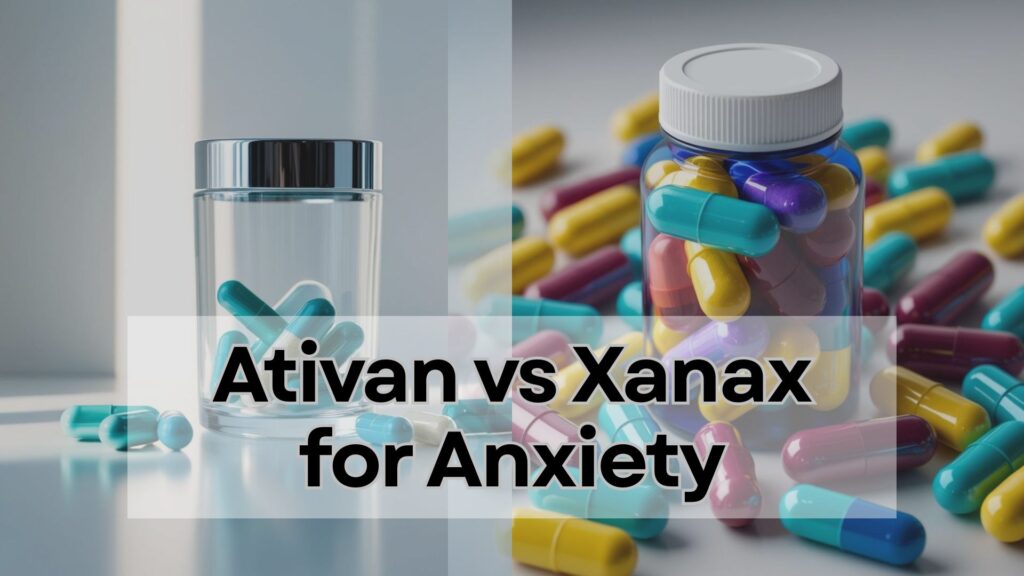
Anxiety disorders are among the most common mental health conditions worldwide, causing persistent worry, fear, and nervousness. To help manage these symptoms, doctors often prescribe benzodiazepines—medications that calm the nervous system. Xanax (alprazolam) and Ativan (lorazepam) are two of the most widely prescribed benzodiazepines drugs for treating anxiety. Both medications share similarities in their uses and effects, but they have some important differences. Understanding them can help you make the best choice for your health. What is Ativan? Ativan is the brand name for lorazepam, a medication that belongs to a class of drugs known as benzodiazepines. It is commonly prescribed to treat anxiety disorders, panic attacks, and insomnia. It works by enhancing the effects of a neurotransmitter called gamma-aminobutyric acid (GABA), which helps to calm the brain and nerves. Ativan for Anxiety: How Does It Work? Ativan is known for its fast-acting properties, making it an effective option for managing acute anxiety symptoms. It can help individuals feel calmer and more relaxed within a short period of time after taking the medication. However, Ativan is not recommended for long-term use due to the risk of developing tolerance, dependence, and withdrawal symptoms. What is Xanax? Xanax is the brand name for alprazolam, another benzodiazepine medication commonly prescribed for anxiety disorders and panic attacks. Like Ativan, Xanax works by increasing the activity of GABA in the brain, leading to a calming and sedative effect. It is also known for its fast-acting properties, with effects typically felt within 1-2 hours after taking the medication.e Xanax for Anxiety: How Does It Work? Xanax is often prescribed for the short-term relief of anxiety symptoms, as well as for the treatment of panic disorders. It is considered to be highly effective in reducing feelings of anxiety and promoting relaxation. However, similar to Ativan, Xanax can be habit-forming and may lead to dependence if used for an extended period of time. Top Similarities Between Ativan and Xanax Ativan and Xanax share several key similarities: Key Differences Between Ativan and Xanax Despite their similarities, Ativan and Xanax have notable differences: Feature Ativan (Lorazepam) Xanax (Alprazolam) Drug Class Benzodiazepine Benzodiazepine Uses Anxiety, seizures (status epilepticus), pre-anesthesia sedation Anxiety, panic disorder Onset of Action Slower than Xanax Faster than Ativan Duration of Effects Longer-lasting Shorter duration Formulations Tablets, injection Tablets, extended-release tablets FDA-Approved for Panic Disorder No Yes Preferred in Older Adults Yes No (higher risk of side effect) Potential for Dependence High High Risk of Overdose Increased with opioids/alcohol Increased with opioids/alcohol Side Effects of Ativan & Xanax Ativan (lorazepam) and Xanax (alprazolam) belong to the benzodiazepine class of medications, primarily used to treat anxiety disorders, panic attacks, and insomnia. Due to their similar mechanisms of action—enhancing the effects of gamma-aminobutyric acid (GABA) in the brain—both drugs share many side effects. These effects are generally dose-dependent, meaning higher doses increase the likelihood and severity of adverse reactions. Common Side Effects The most frequently reported side effects of Ativan and Xanax include: These side effects are typically mild to moderate but can be concerning in some cases, particularly in elderly patients or those with pre-existing conditions. Serious Side Effects While less common, some individuals may experience more serious side effects that require medical attention. These include: Comparison of Side Effects: Ativan vs. Xanax The table below outlines the potential side effects of both medications: Side Effect Ativan Xanax Nausea Yes Yes Constipation Yes Yes Increased Salivation No Yes Appetite Changes Yes Yes Weight Gain No Yes Drowsiness & Fatigue Yes Yes Weakness & Tiredness Yes Yes Unsteadiness (Coordination Issues) Yes Yes Dry Mouth No Yes Menstrual Irregularities No Yes Disinhibition (Impulsivity) No Yes Depression or Mood Changes Possible Yes Withdrawal Symptoms (with prolonged use) Yes Yes Ativan Dosage vs. Xanax Dosage Ativan and Xanax are both prescription medications used to treat anxiety and related conditions. They are typically taken at home and are usually prescribed for short-term use (about 2 to 4 weeks). However, in some cases, they may be taken daily for a longer period under medical supervision. Doctors usually start with the lowest possible dose and adjust it based on how the patient responds. Ativan Dosage Ativan is available in both brand-name and generic versions. The most commonly prescribed form is the immediate-release (IR) tablet, which comes in 0.5 mg, 1 mg, and 2 mg strengths. Xanax Dosage Like Ativan, Xanax is available as both a brand-name and generic medication. It comes in multiple forms, including immediate-release (IR) tablets, extended-release (XR) tablets, oral liquids, and orally dissolving tablets. Both Ativan and Xanax should be taken exactly as prescribed to avoid dependence and withdrawal symptoms. Always consult a doctor before adjusting your dosage. Ativan vs. Xanax: Which One Is Better? Ativan and Xanax each have unique benefits. Xanax works faster, while Ativan lasts longer in the body. Both can cause withdrawal symptoms after 4 to 6 weeks of continuous use. Xanax is approved for adults 18 and older, whereas Ativan can be prescribed to children as young as 12. Choosing the right medication depends on factors like health conditions, medical history, and lifestyle. A doctor will determine the best option, and online psychiatry services can help when in-person visits aren’t possible. The answer depends on your specific needs. Here’s a simple guide: Always talk to your doctor about which medication is best for you. How to Get a Prescription for Ativan or Xanax Only licensed professionals—such as psychiatrists or nurse practitioners—can prescribe Ativan or Xanax after evaluating your anxiety. They assess mood, physical health, and medical history to determine the best treatment. Understanding the xanax online prescription process can help guide your treatment decisions. Bottom Line: Ativan vs. Xanax Ativan (lorazepam) and Xanax (alprazolam) are both benzodiazepines commonly prescribed for anxiety disorders, panic attacks, and related conditions. While they function similarly by enhancing the calming effects of gamma-aminobutyric acid (GABA) in the brain, there are key differences in their onset, duration, and overall effects. The choice between Ativan and Xanax depends on individual medical history, the specific
Tramadol Overdose: Can You Overdose on Tramadol?
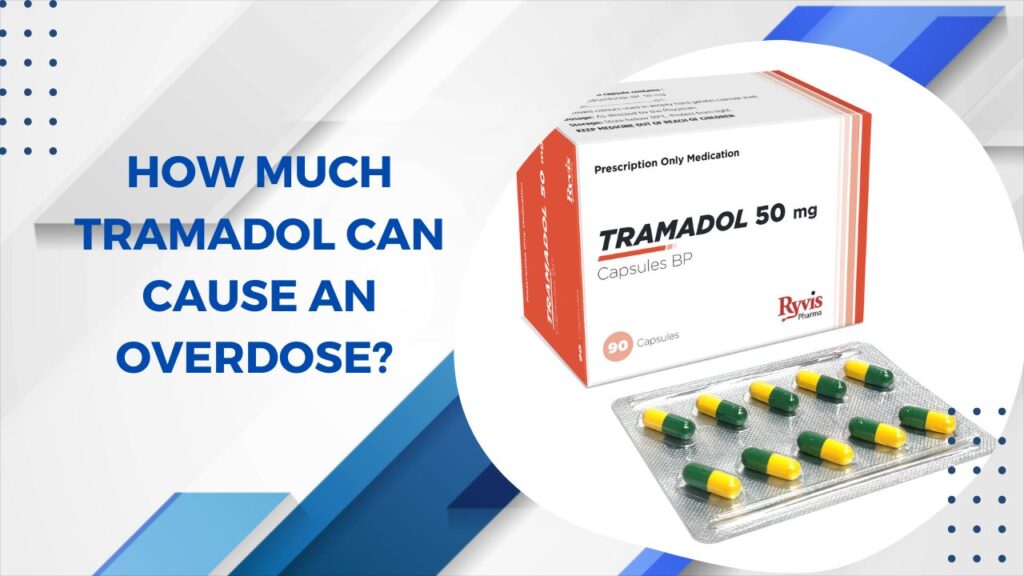
Tramadol remains one of the most prescribed and commonly misused opioids in the United States. According to recent CDC data, opioid-related deaths in 2023 reached nearly 110,000, while 2024 saw a significant decline to around 80,000, largely attributed to expanded access to naloxone, buprenorphine, and other harm reduction measures. Despite these improvements, the rise of fentanyl-laced counterfeit pills has introduced new risks for tramadol overdose in 2025, particularly when purchased from unverified online sources. Tramadol, a widely known prescription opioid, is one of the most frequently abused painkillers in the United States. Due to its widespread misuse, tramadol overdose has become a growing concern, with opioid-related deaths consistently ranking among the top causes of drug fatalities. This synthetic opioid is prescribed to treat moderate to severe pain by altering pain perception in the brain. Tramadol doses can vary, from 50 mg immediate-release tablets to 300 mg extended-release formulations. Given this variability, overdose is a very real risk if tramadol is consumed irresponsibly. Can You Overdose on Tramadol? It is possible to overdose on tramadol, especially when taken in excessive amounts or combined with other central nervous system (CNS) depressants like alcohol, benzodiazepines, or other opioids. Tramadol overdoses can be fatal, so recognizing symptoms and understanding risk factors is crucial. What Happens if You Overdose on Tramadol? A tramadol overdose can be deadly, particularly if the drug is combined with other depressants. Tramadol works by binding to opioid receptors and increasing serotonin and norepinephrine levels in the brain. Overdosing on tramadol can lead to severe respiratory depression, seizures, and serotonin syndrome, which may be fatal. If you feel your prescribed tramadol dose is not managing pain effectively, consult your doctor instead of increasing the dose on your own. Taking too much tramadol or combining it with other substances greatly increases the risk of overdose and death. How Much Tramadol Does It Take to Overdose? The amount of tramadol required for an overdose varies from person to person. Most overdoses occur when tramadol is taken in high doses or combined with other substances like alcohol or benzodiazepines. Additionally, tramadol bought illegally may be laced with stronger opioids like fentanyl, further increasing the risk of overdose. Combining tramadol with other CNS depressants can suppress breathing and lead to a fatal overdose. The FDA has issued a Black Box Warning against combining opioids with other sedative medications due to these risks. What Are the Symptoms of a Tramadol Overdose? Recognizing tramadol overdose symptoms is vital for seeking prompt medical attention. These symptoms include: Any overdose symptom should be taken seriously. If you or someone you know exhibits these symptoms, seek emergency medical help immediately. How Much Tramadol Is Too Much? The risk of tramadol overdose depends on individual tolerance levels. Someone new to the drug may overdose on a lower dose than a person who has been using it long-term. Additionally, combining tramadol with other CNS depressants drastically increases overdose risk regardless of the dose taken. Why Buying Tramadol Online Increases the Risk of Addiction and Overdose Buying Tramadol online can increase the risk of addiction and overdose due to several factors. Many online pharmacies operate without proper regulation, making it easier to obtain Tramadol without a prescription or medical supervision. This can lead to misuse, as people may take higher doses or use it more frequently than prescribed. Tramadol is an opioid, and prolonged or excessive use can lead to dependence, where the body craves the drug to function normally. Additionally, some online sources may sell counterfeit or contaminated Tramadol, increasing the risk of harmful side effects or overdose. Without a doctor’s guidance, individuals may also mix Tramadol with other medications or alcohol, further raising the chances of severe health complications. How to Safely and Legally Buy Tramadol in 2025 Tramadol is a prescription pain medication approved by the FDA to treat moderate to severe pain. The safest and most legal way to get it is by first seeing a licensed doctor in person or through a trusted telehealth service. These days, many people use platforms like Teladoc, MDLIVE, or HealthTap to talk to a doctor from the comfort of home. If the doctor decides tramadol is right for your condition, they’ll send your prescription directly to a licensed pharmacy electronically. You can then get your tramadol from a nearby pharmacy like CVS or Walgreens or through an online pharmacy that’s officially certified—look for one approved by the NABP (National Association of Boards of Pharmacy) or with a web address ending in “.pharmacy.” Avoid any websites that offer tramadol without a prescription. These are often illegal and may sell fake or unsafe medications. Starting in 2025, some prescription systems even use AI to check for dangerous drug interactions, so be honest about your medical history. Always follow your doctor’s instructions carefully, and never share your medication. This regulated process is designed to keep you safe and legally protected. Tramadol Overdose Treatment If someone accidentally or knowingly takes too much Tramadol, they need immediate medical help. Tramadol overdose can be fatal, so it should not be ignored. First, call 911 or your local emergency number. Overdose symptoms can include: fainting, difficulty breathing, slowing of the heartbeat, confusion, vomiting, or seizures. In the hospital, doctors usually treat the patient with activated charcoal, IV fluids, and an antidote such as naloxone, especially if overdose symptoms are severe. The most important thing is that Tramadol should always be taken under the direction of a doctor, and the dosage should be strictly followed to avoid overdose or misuse. If you accidentally take an extra dose, contact your doctor immediately – delaying can be dangerous. If you or someone you love needs to quit drug addiction, these facilities of The Recovery Village network can be the beginning of a new life for you. These centres not only treat alcohol and drug addiction but also provide proper treatment for co-occurring mental health conditions. Top Tramadol Overdose Treatment Centre Orlando Recovery Centre (Florida) – Provides top-level care for both addiction

